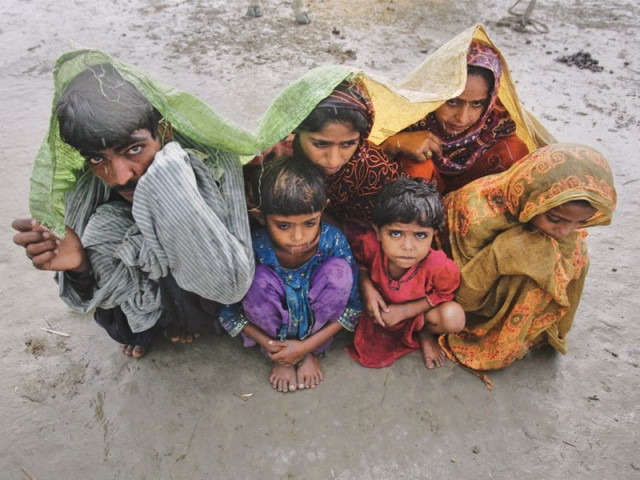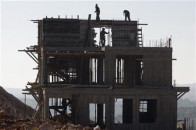Step in the right direction: SIDA devises master plan to avert future floods
The Rs7.2-billion plan is also aimed at creating economic activity in rural Sindh.

A family, displaced by the 2011 floods, uses a tarp to escape the monsoon downpour at a makeshift camp for flood victims in Badin. SIDA proposed a Rs7.2 billion Regional Master Plan and identified five investment projects to avert such disasters in the future. PHOTO: FILE
The proposal was presented at a workshop on Tuesday. Sindh additional chief secretary Arif Ahmed Khan, additional forests secretary Ajaz Nizamani, Idrees Rajput, a water expert, SIDA managing director Ehsan Leghari, Qadir Shah from International Union for Conservation of Nature, NGO representatives and environmentalists participated in the workshop.
Leghari informed the audience that all five schemes identified by them met the criteria of sustainability and high economic return and included rehabilitation of Left Bank Outfall Drain (LBOD), revival of natural waterways and storm drains, mangroves plantation, rehabilitation of Deh Akro II and Chotiari wetlands and the use of drainage water to plant forests.

He said that LBOD, which became operational in 1977, carries water from three districts of the Sukkur Barrage command area, namely Shaheed Benazirabad, Sanghar and Mirpurkhas. “Due to the inadequate drainage network nearly a fifth of the canal command area has been affected by water logging and salinity,” he said.
“RMP will reduce the devastation caused by floods especially the damage caused to agriculture and physical and social infrastructure on the left bank of River Indus. Its implementation has become all the more important considering the damage done by floods in 2010 and 2011 and at a time when climate change is expected to increase the probability of extreme weather events.”
He said that there is an urgent need to rehabilitate the LBOD and expand the drainage network from merely four districts to at least 15 by reviving the blocked natural drainage systems and building new surface water drains. Elaborating on the efficacy of the scheme, he said that around 5.5 million acres and 21 million in 15 districts will be saved from inundation. Speaking about the mangrove and forest plantation, he said that the project would benefit environment as well as local inhabitants who are dependent on these natural resources. He said that once the drainage system is in place it will ensure minimum disruption in access to social services and animal fodder, lower incidence of waterborne diseases and uninterrupted economic activity.
Published in The Express Tribune, June 26th, 2013.



















COMMENTS
Comments are moderated and generally will be posted if they are on-topic and not abusive.
For more information, please see our Comments FAQ